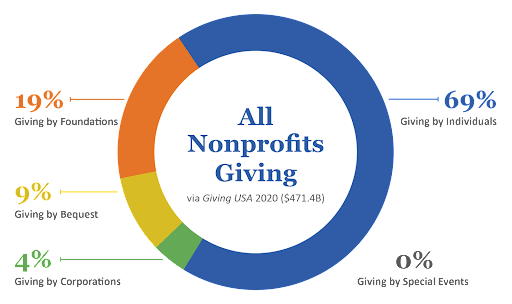Nonprofit Company: Professional Assistance for Your Objective and Neighborhood Effect
Nonprofit Company: Professional Assistance for Your Objective and Neighborhood Effect
Blog Article
The Significance of Collaboration and Partnership for a Nonprofit Company in Maximizing Resources and Enhancing Community Engagement
In the realm of not-for-profit agencies, cooperation and collaboration arise as necessary systems for enhancing sources and promoting community involvement. By tactically involving with other organizations, nonprofits can take advantage of shared competence and monetary assistance, therefore dealing with complicated social challenges extra adeptly. Moreover, these partnerships not just boost program efficacy yet likewise grow a deeper feeling of community participation and ownership. Yet, real possibility of these collaborative initiatives often stays untapped, raising concerns about exactly how ideal to navigate collaborations for ideal influence and continual success. What elements add to the effectiveness of these partnerships?
Benefits of Cooperation
Furthermore, cooperation promotes advancement by motivating the exchange of ideas and ideal methods. When organizations collaborate, they can check out diverse perspectives, bring about imaginative services that may not emerge in seclusion. This common problem-solving approach can inevitably enhance service shipment and program results.
Furthermore, joint initiatives can enhance area interaction. When nonprofits companion with one another, they can activate wider support from stakeholders, consisting of volunteers, donors, and community members. This cumulative interaction not just raises presence yet likewise strengthens the reputation of the getting involved companies.
Structure Strategic Partnerships
Partnership among nonprofit companies commonly causes the development of critical collaborations, which are important for taking full advantage of impact and achieving common goals. These collaborations enable companies to leverage each other's strengths, enhancing solution shipment and increasing outreach. By straightening goals and objectives, nonprofits can create a synergistic result that amplifies their reach and performance within the community.
Structure tactical collaborations needs careful planning and good understanding. Organizations should first identify potential partners that share similar worths and goals, making certain compatibility in goal and vision. Developing open lines of communication promotes count on, enabling partners to discuss assumptions, sources, and duties transparently. Routine conferences and collective initiatives can aid keep energy and address difficulties proactively.
In addition, plainly defined functions and duties are important for accountability and success. Defining the collaboration via composed agreements can provide a framework for collaboration, laying out the scope of work, efficiency metrics, and examination techniques. By cultivating these tactical alliances, not-for-profit agencies can improve their ability to address neighborhood demands, innovate options, and mobilize resources effectively, eventually leading to a more considerable and sustainable impact in the areas they serve.
Sharing Resources Effectively
Exactly how can nonprofit companies optimize their impact with effective source sharing? By tactically teaming up with various other companies, nonprofits can boost their functional effectiveness and expand their reach within the community. Resource sharing involves pooling different properties, consisting of financial sources, employees, experience, and centers, to address common objectives better.
/cloudfront-us-east-1.images.arcpublishing.com/pmn/6GXUXHF3ZNC3NEJIVB7WWUIHFM.jpg)
In addition, leveraging each various other's staminas can foster advancement. By trading understanding and finest methods, agencies can improve service delivery and create new services to area challenges. Efficient resource sharing also grows a sense of unity, reinforcing the concept that collaboration is crucial for attaining considerable social impact.
Engaging the Area
What approaches can not-for-profit firms utilize to properly involve their neighborhoods? Making use of different platforms, such as social media, e-newsletters, and area online forums, allows companies to share information, solicit responses, and foster dialogue.
In addition, developing collaborations with local organizations can enhance outreach efforts. nonprofit agency. Teaming up with schools, businesses, and various other nonprofits can magnify sources and create a much more substantial support network, permitting joint campaigns that reverberate with community requirements
In addition, organizing area occasions, workshops, and volunteer chances can promote deeper engagement. These activities create a feeling of belonging and motivate active participation, making it possible for individuals to add to the agency's objectives while constructing relationships with fellow community members.
Gauging Joint Success
Reviewing the performance of collective initiatives is necessary for nonprofit firms seeking to optimize their impact. Gauging joint success entails developing clear, measurable purposes and making use of a selection of metrics to examine performance. Secret signs may include the variety of collaborations formed, sources shared, and the tangible results achieved via collaboration.
To successfully determine success, nonprofits should apply a structure that incorporates both qualitative and quantitative data. Interviews and surveys can give understandings into stakeholder contentment and the viewed worth of collaborations. In addition, tracking metrics such as service reach, area interaction levels, and financial efficiency can provide an extensive view of joint efficiency.
Regular examinations ought to be conducted to recognize areas of renovation and finest techniques. This repetitive process not just improves liability yet additionally promotes a culture of continuous understanding within the organization - nonprofit agency. By transparently sharing examination results with stakeholders and companions, nonprofits can reinforce connections and read this post here build trust
Eventually, gauging collaborative success allows nonprofit firms to improve their techniques, assign resources much more successfully, and bolster their mission-driven initiatives, bring about a greater collective effect on the neighborhoods they offer.
Conclusion

In the world of nonprofit firms, partnership and collaboration emerge as vital mechanisms for fostering and intensifying sources area interaction - nonprofit agency. By promoting article these strategic alliances, nonprofit firms can enhance their capacity to attend to area demands, innovate options, and mobilize resources efficiently, ultimately leading to a more sustainable and substantial effect in the communities they offer
By strategically collaborating with other organizations, nonprofits can improve their functional effectiveness and prolong their reach within the community.What methods can nonprofit agencies employ to properly engage their communities?Cooperation and partnership stand as vital pillars for nonprofit firms aiming to optimize sources and improve neighborhood engagement.
Report this page